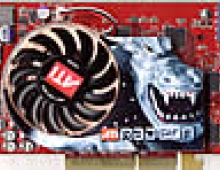Connect3D X300SE
16. Conclusion
Performance is not a strong point of the Connect3D X300SE. Compared to the POV 6200TC or Powercolor X300 that we have previously reviewed, there's actually quite a large gap between them. In fact, the only thing that makes this card differ from the older 9200 series is the smaller 0.11 micron fabrication process, features like Pixel and Vertex Shader version 2.0 and of course, true DirectX 9.0 support. A nice feature of the X300SE is that unlike the X300, it remains fanless, ensuring zero noise under any circumstances.
Overclocking the X300SE was limited, for two reasons. Firstly, fanless operation and secondly, the memory modules. With a fan cooling the heatsink, the core could be stable at higher frequencies than currently possible without a fan, probably just as high as the Powercolor X300 achieved. However, installing a fan is very easy to do yourself, so that was not as important as the fact that the Elixir memory modules used on the card, are already close to their limits, which proved to be a mere 30MHz higher than the clock frequency.

Listening to user feedback, Connect3D has stripped away any bundled software from their cards in order to keep the costs as low as possible for the end user. This is important, especially for entry level cards such as the X300SE.
The Connect3D X300SE costs around US$60, one of the lowest prices for a DX9 card. Performance is a disadvantage as the card lacks the power to run most modern games with satisfactory framerates or resolutions. However, if a cheap, noiseless card is just what you need for your computer, this card won't disappoint you.
Pros:
- Silent operation
- The cheapest, latest generation card
Cons:
- Not the best performance (as with most SE's)
- No bundled software
Performance/Features: |
|
Overclocking: |
|
Bundle: |
|
Value for money: |

















